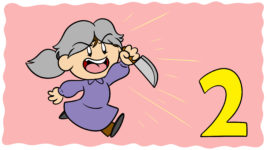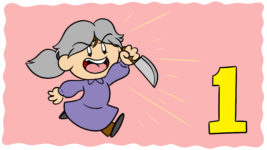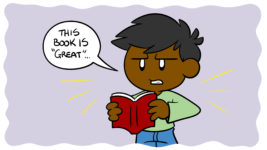The plot outline versus just sitting down and writing: is one method more effective than the other? The short answer: no, absolutely not—whichever suits your writing style best.
If you look around, there are certainly those who would argue very strongly in favor of one method or the other. These writers have clearly found a way that works best for them—good on them. But, just in case you hadn’t noticed, you’re an entirely different person.
Remember that annoying thing your parents used to say: “If your friends walked off a cliff, would you follow?” Just because all the other kids are doing it, doesn’t mean it’s the best thing for you. Only you can decide that.
From my own experience, I have used both methods and have found that whatever method I used suited the purpose for which I used it. So from this I would say, while it is mostly about the method you prefer, in certain circumstances using one over the other might be more effective.
Let’s look at these thoughts in a little more detail.
For plot outlines
For the plot outlines argument, I give you J.K. Rowling.
J.K. Rowling, it is well understood, has boxes and boxes of notes on the Harry Potter series. Obviously not every detail made it into the books, but from what descriptions there are, it is clear she really knows her characters, their histories and their story arcs, and she really knows the direction in which the plot is moving. She writes with authority—she knows what she’s talking about and, as the reader, you feel you are in safe hands. From this, another important lesson can be gleaned:
Respect your reader
If you have dreams of being the next J.K. Rowling, or perhaps the next George R.R. Martin, please treat your fans with respect. Should your dreams come true, you will find yourself with legions of devotees who are not fools—they will read your books repeatedly, ask questions you had not thought to answer and if there is a hole in the plot, someone will find it. Thus, only the brave, possibly reckless, would proceed without a very solid, very detailed plot outline.
A plot map will help you in many ways, such as maintaining the momentum of the story, maintaining the continuity and helping you stay focused, as well as filling in any holes someone might wish to poke a finger in.
In this respect, genre is important in terms of the question of using plot outlines or not. A crime novel? Definitely use an outline. A fantasy? If you find this is a useful tool for you, but not essential. A fantasy involving time-travel? Plot outline. A romance inspired by the handsome stranger on the train? Just start writing and see where it takes you.
If you’re after more detail on drafting an outline check this out.
For freestyling
Creative writing 1-0-1: the tutor plonks a vile orange plastic chair in the middle of the room. “You have fifteen minutes. Write a story about the chair.” True story. You would be surprised what your mind comes up with.
If you take a creative writing class, your tutors will present you with all sorts of crazy ways to get your imagination really working and to get your brain to translate these ideas into useful prose. They are trying to teach you the art of writing. Now this might not be as ordered as a plot outline, but it does take skill.
It is possible that you might get so caught up in mapping a plot that you forget to actually write and your art suffers. Robin McKinley, an author I enjoy for the lyricism of her prose, said it well:
If you want to keep 3×5 cards or a file on your PDA for plot and character annotations and draw up outlines …, then by all means do so — just so long as your 3×5 cards and beautifully structured and subdivided outlines don’t become an excuse never to get around to the writing.
Just as you respect your readers, so must you respect your writing.
“You can’t edit a blank page.”
Jodi Picoult very wisely said this. If you are inspired by something, pick up a pen or turn on the computer and write. The story will develop itself as you go along and the characters will become clearer. Then you can go back and edit, adjust, tweak, give more dimension. Don’t feel you must have boundaries, push past those boundaries and explore what’s on the other side. If you don’t like what you find, go back.
It’s logical to assume that using this method will require more editing later, but there’s nothing wrong with this. You will have a better idea of who your characters are and which details are more important to the plot than others.
Basically, it’s all about you
There are certain authors I read because of their manipulation of words—their prose flows beautifully and I enjoy the experience of their writing. Other writers I enjoy for the excellent plots, the storylines that are so intricately woven, but at the end everything comes together and I feel satisfied. Each one of these writers will have a preference, each one will have honed their art, whether by use of outlines or not. They will write about what they know, how they know.
We all have our own writing styles, just as we all have our own style of dressing. To try to change what makes the creative juices flow may very well end up shutting the juices down entirely. So don’t box yourself in. Yes, you need to be sensible about the sort of story you are wanting to tell—remember to write for the reader as well as yourself—but stick to your own style as much as possible.
Story telling is an art—wield that pen as best as you know how.
What’s your preferred method of writing? I’d love to hear about your approach in the comments below.






3 thoughts on “How To Decide If You Should Plot Outline Or Freestyle It”
If used an outline. Its great to keep dates n such straight. Not so great when creativity strikes. Yes, the key is knowing when one is best used. I also remind myself that it is just an outline and I can change it as the story grows. Im working on a based on life book right now, definitely using an outline to keep the timeline straight. I totally agree keeping it simple is more effective. I love 3x5s to keep character continuity. It is definitely embarrassing when you hear, “hey he was blue eyed five chapters ago” Not to mention time lost in editing that error. I outlined a sonnet once, big help in staying focused on the theme. Plus, I created two more just from the ideas that popped up while outlining. I totally agree with your article.
It is true, there is no perfect rule: you have to test them both, depending from the story you are going to tell!
I’ve never had any luck with outlines. When I first thought about writing a novel, in 2000, I felt I needed to write a detailed outline first. The problem was that I couldn’t think of an entire plot to outline. I dithered over this for three years, before finally saying. “Just start writing…something, anything.” So I started with just a premise: Five men aboard a deep space prospecting ship suffer some sort of catastrophe, with no hope of rescue. They have to depend on their own skills and determination to survive.
I started with only that and the story evolved as I wrote. 69 days later, I had a complete first draft. Was it great? Not even close. It was my first attempt at a novel and it was full of data dumps, passive writing, and many other flaws, but the story was sound. The next year, I used the same technique on my second novel, and the following year a third. With each novel, my skill improved.
After each one, I went back and rewrote parts of the previous novels, improving them along the way. In 2007, I expanded a 3-chapter novella into a novel, my fourth.
Today, My first novel, The Tesserene Imperative has a 4.6-star rating on Amazon. The second, The Mars Imperative (a prequel to the first) has a 4.3-star rating. The third, Sunrise Destiny, was a finalist for an EPIC Award in 2010. The fourth, My Other Car is a Spaceship, was the Amazon #1 bestselling military sci-fi novel in September 2014. And my fifth novel, Aliens Versus Zombies, released two weeks ago, has 4 reviews so far and they’re all 5-stars.
But I digress. The point is that although I have never been able to come up with a full plot early enough to create an outline (except in very vague form), I have been able to craft interesting and entertaining stories, anyway, from nothing more than a vague premise.
Believe me, sometimes I wish I could do outlines (I have two unfinished novels; unfinished because I can’t figure out how to end them), but I know that most of the time spent writing an outline would be wasted. Why? Because the story and characters will take on lives of their own and head off in a tangent from the original outline, as they always do.
That first novel, about the men on the damaged spaceship? It ended up being a first-contact thriller, rather than just being about survival. I wouldn’t have scripted it that way, but it turned out great.
As Frances says, use whichever method works best for you and the story you’re telling.